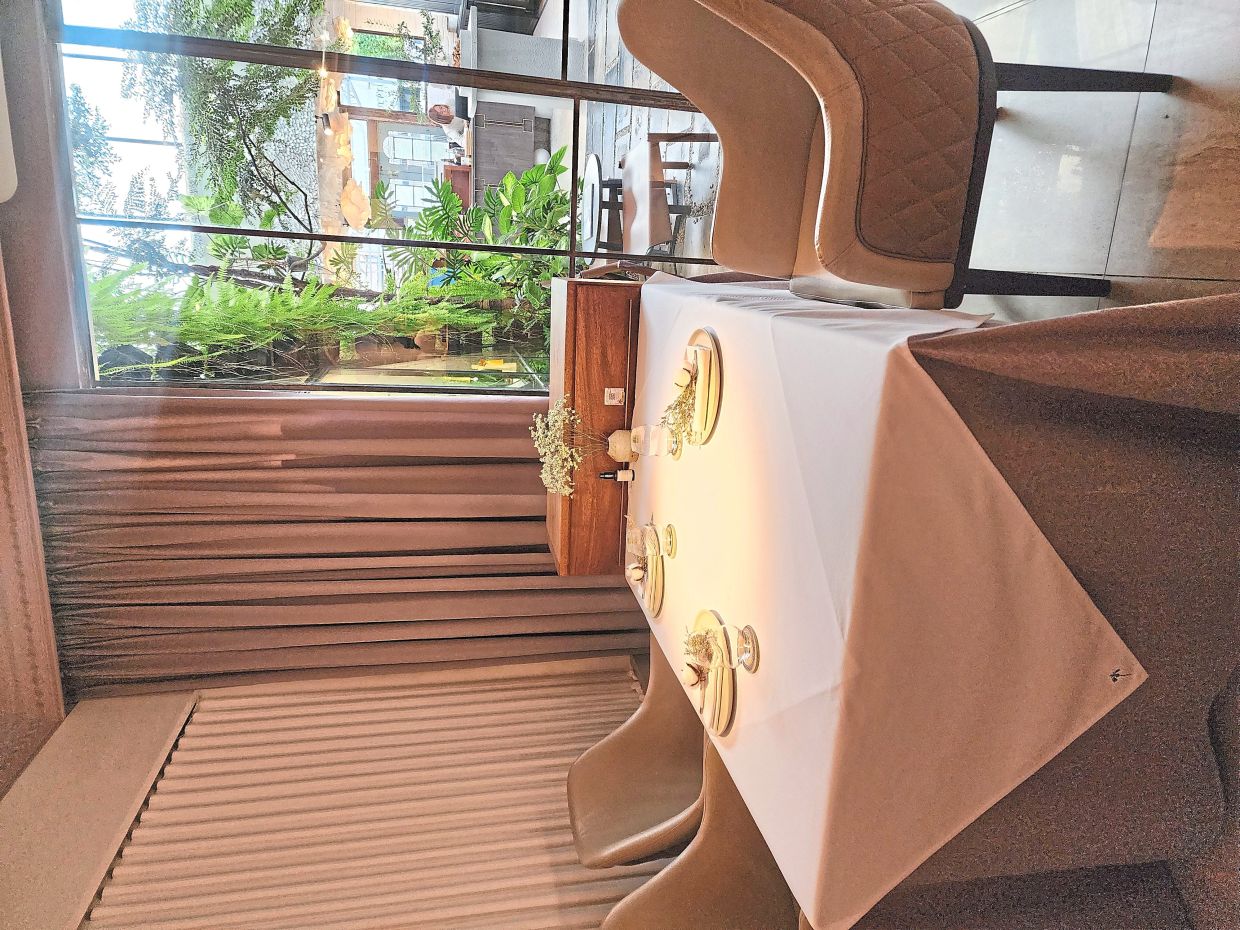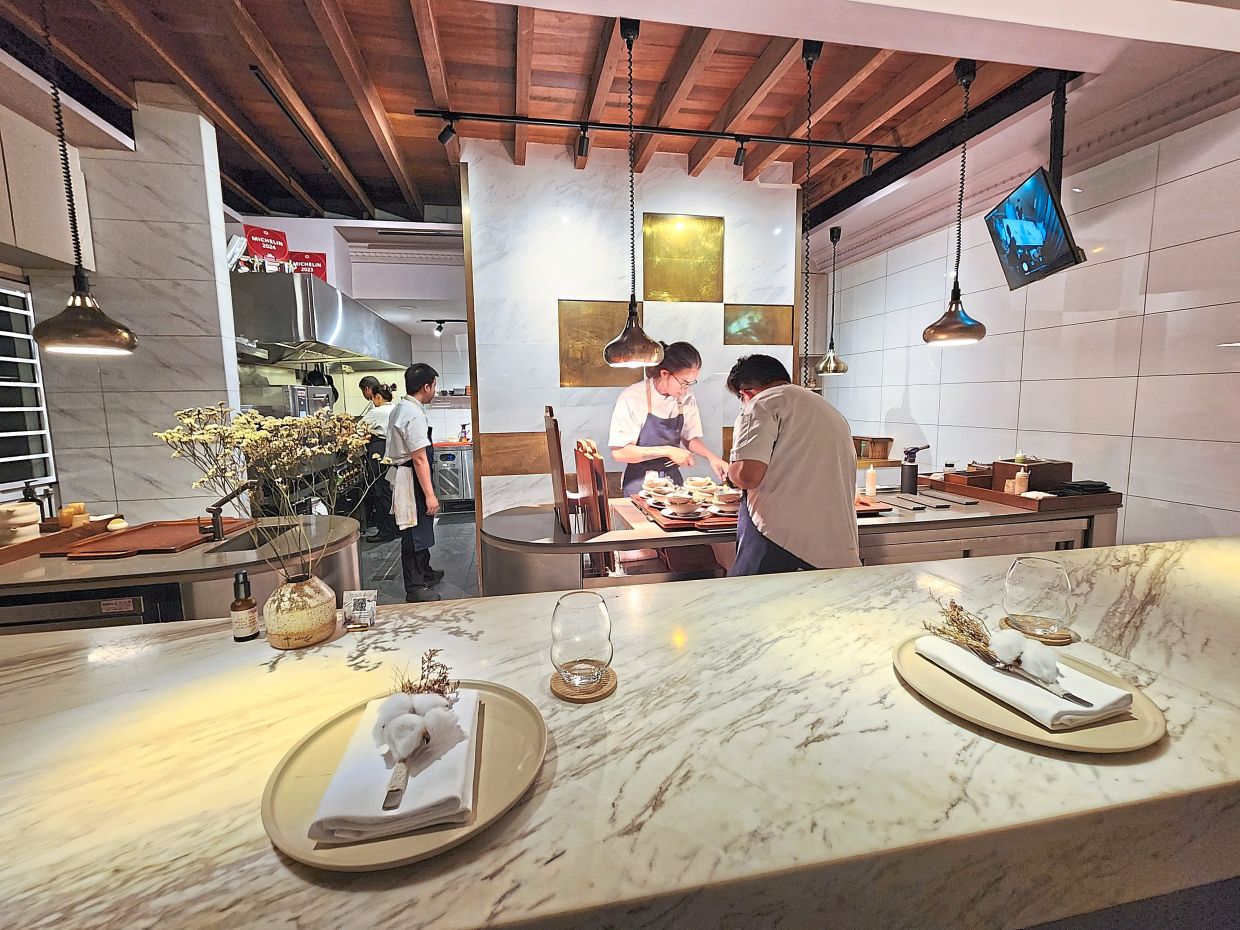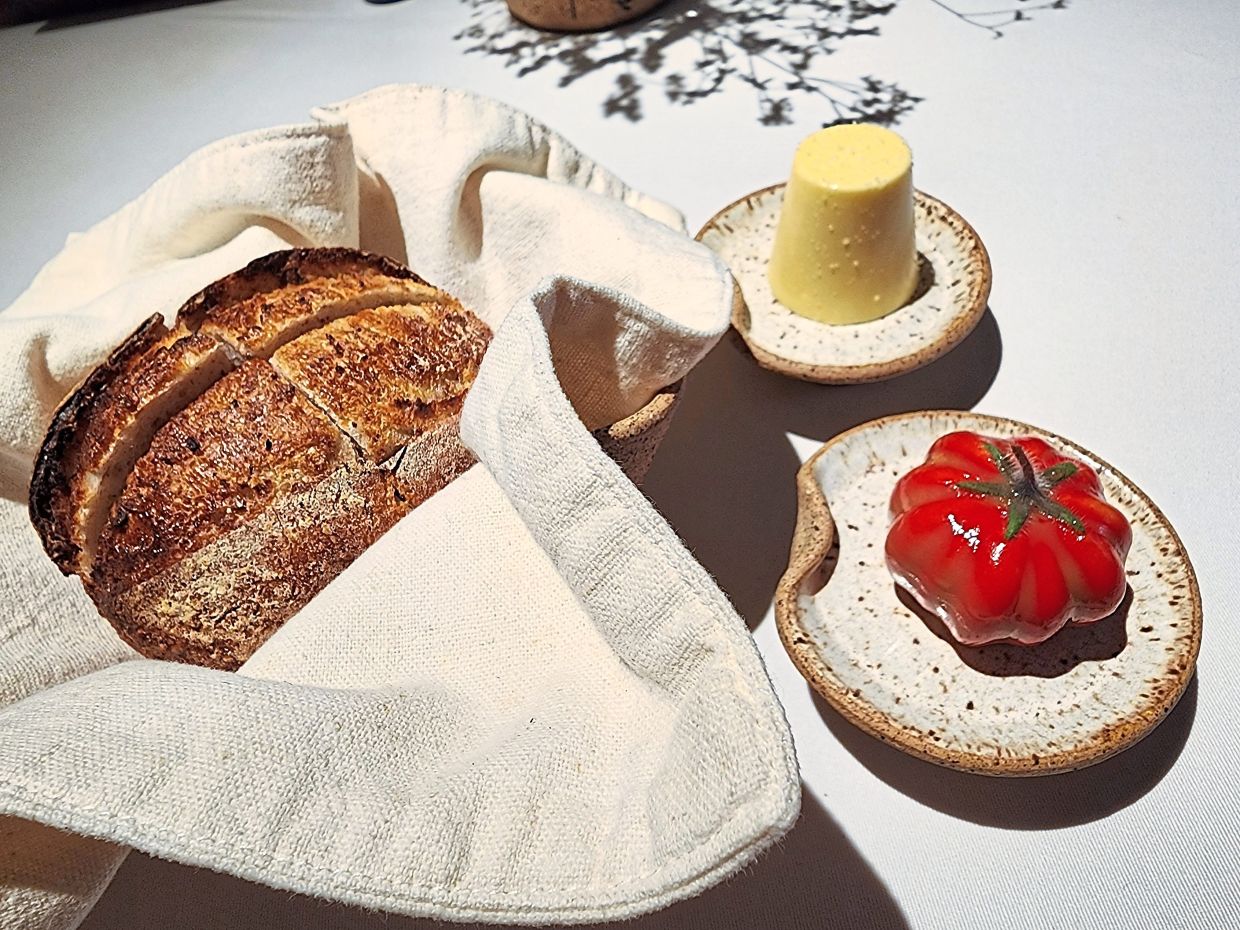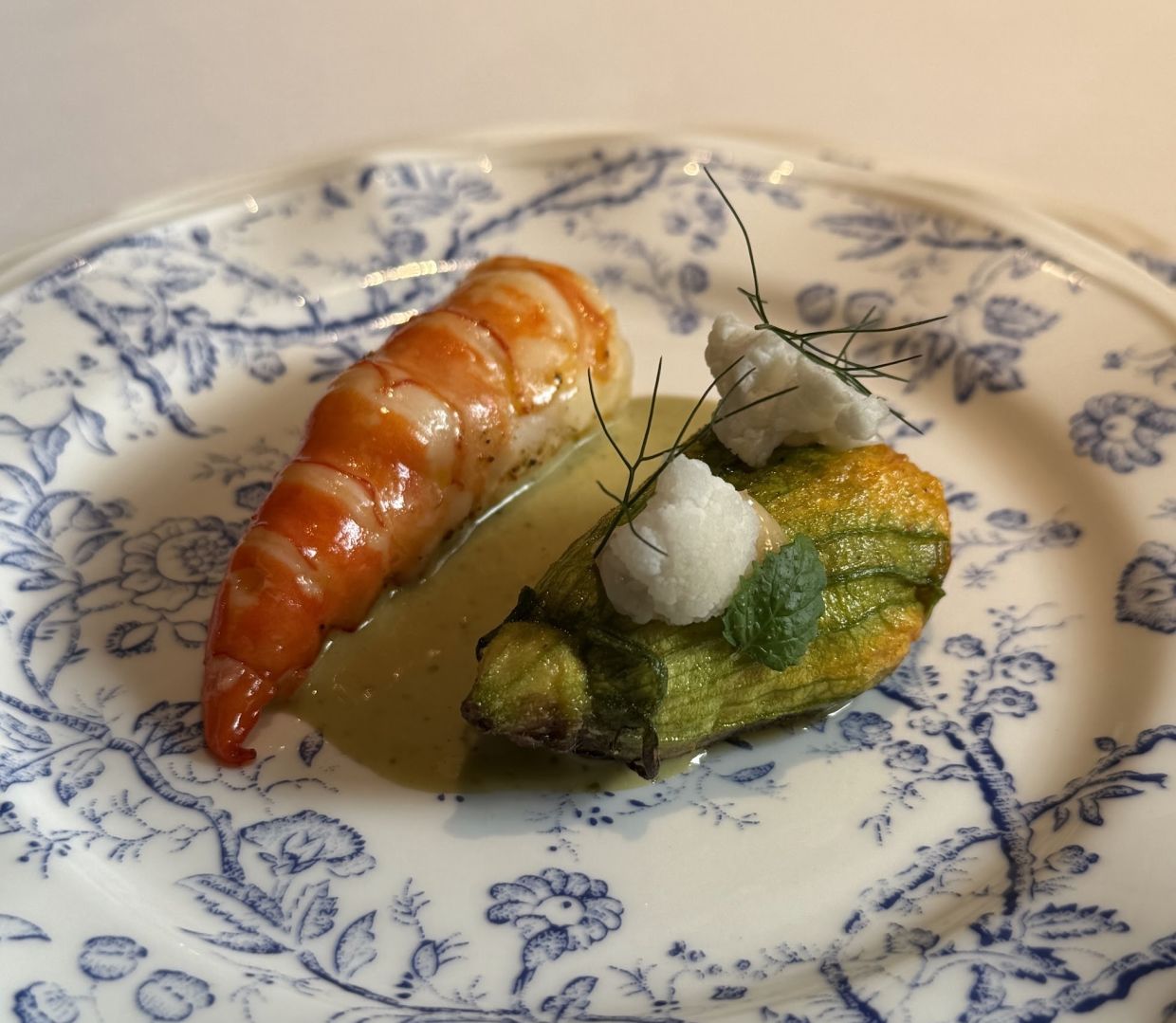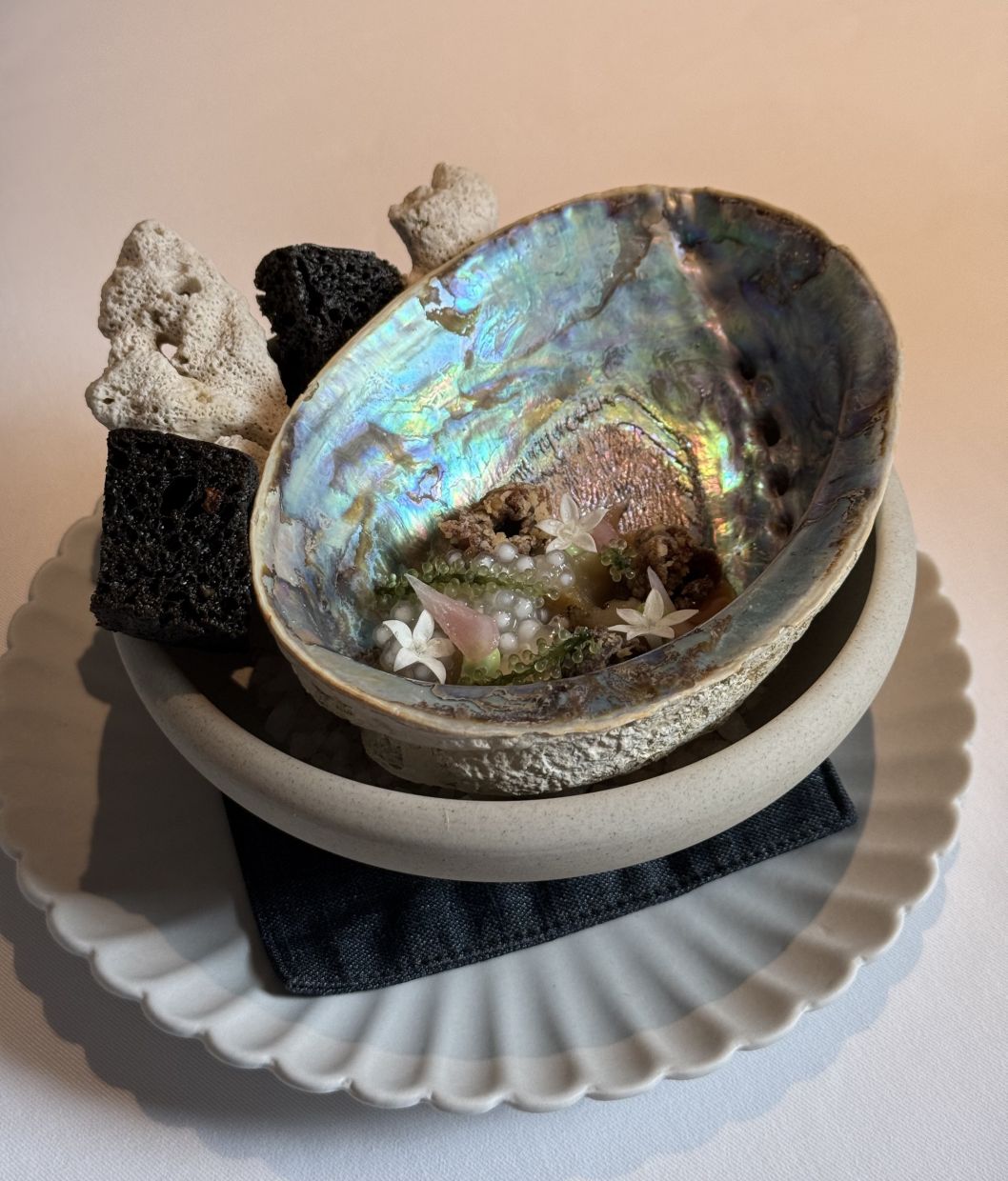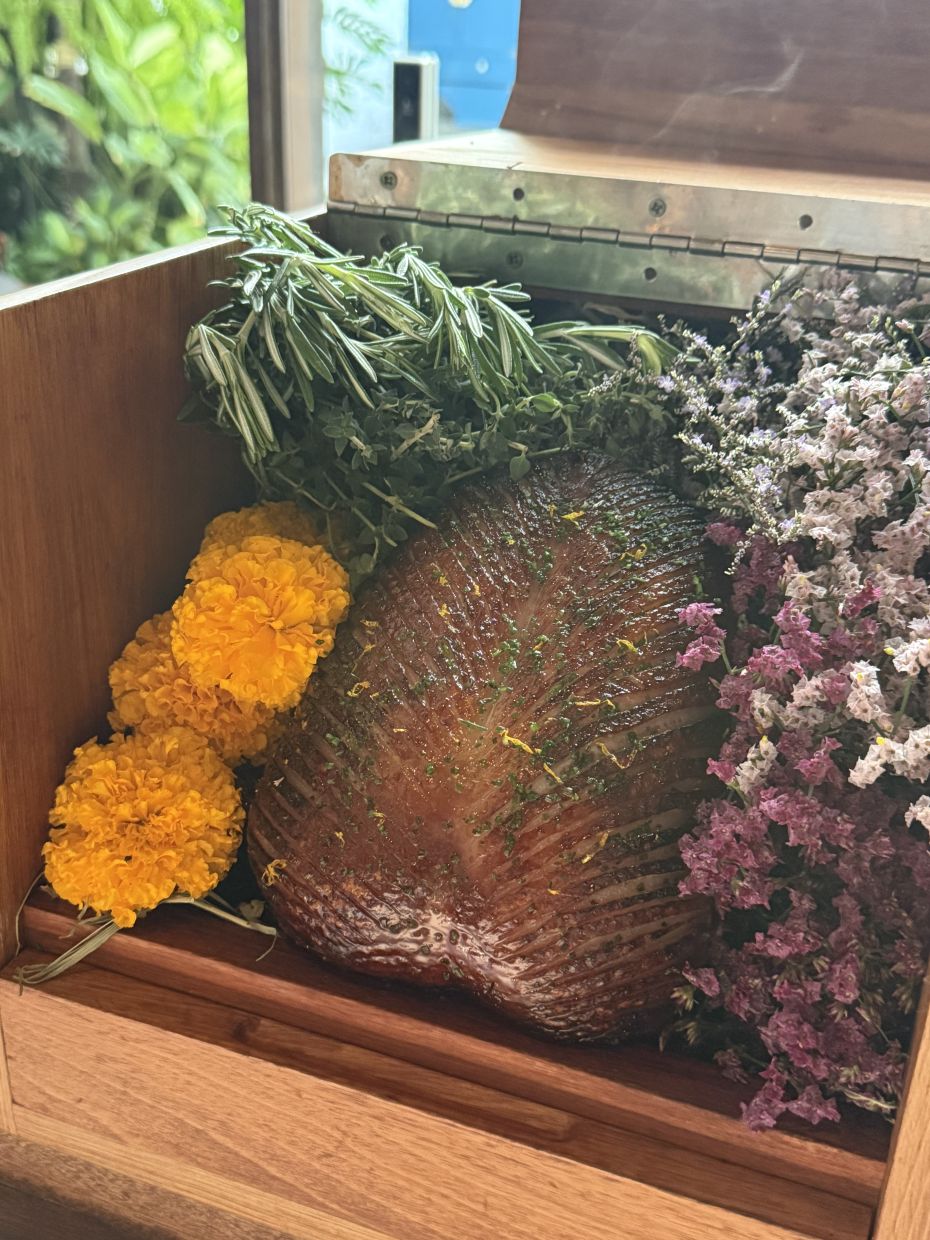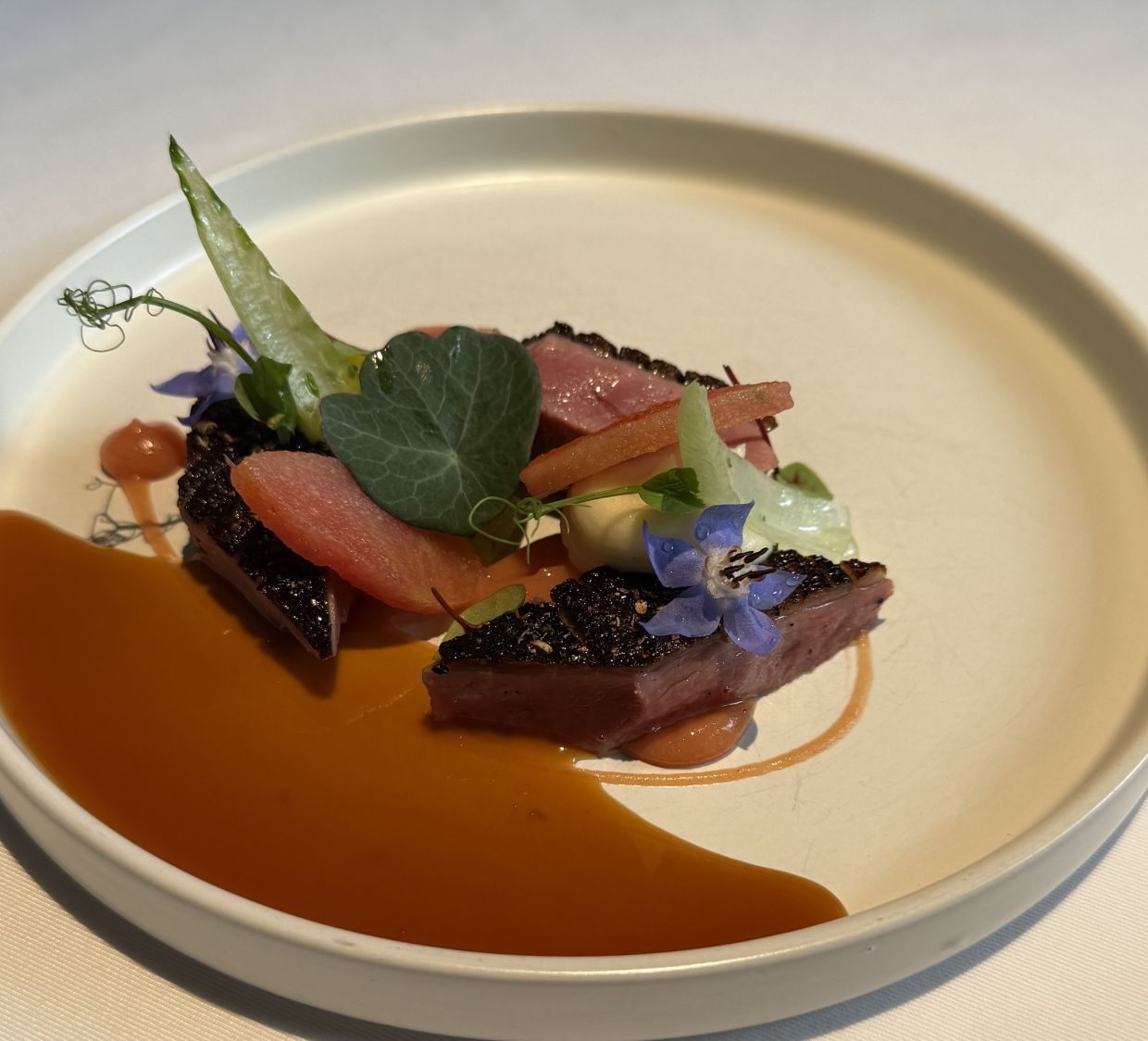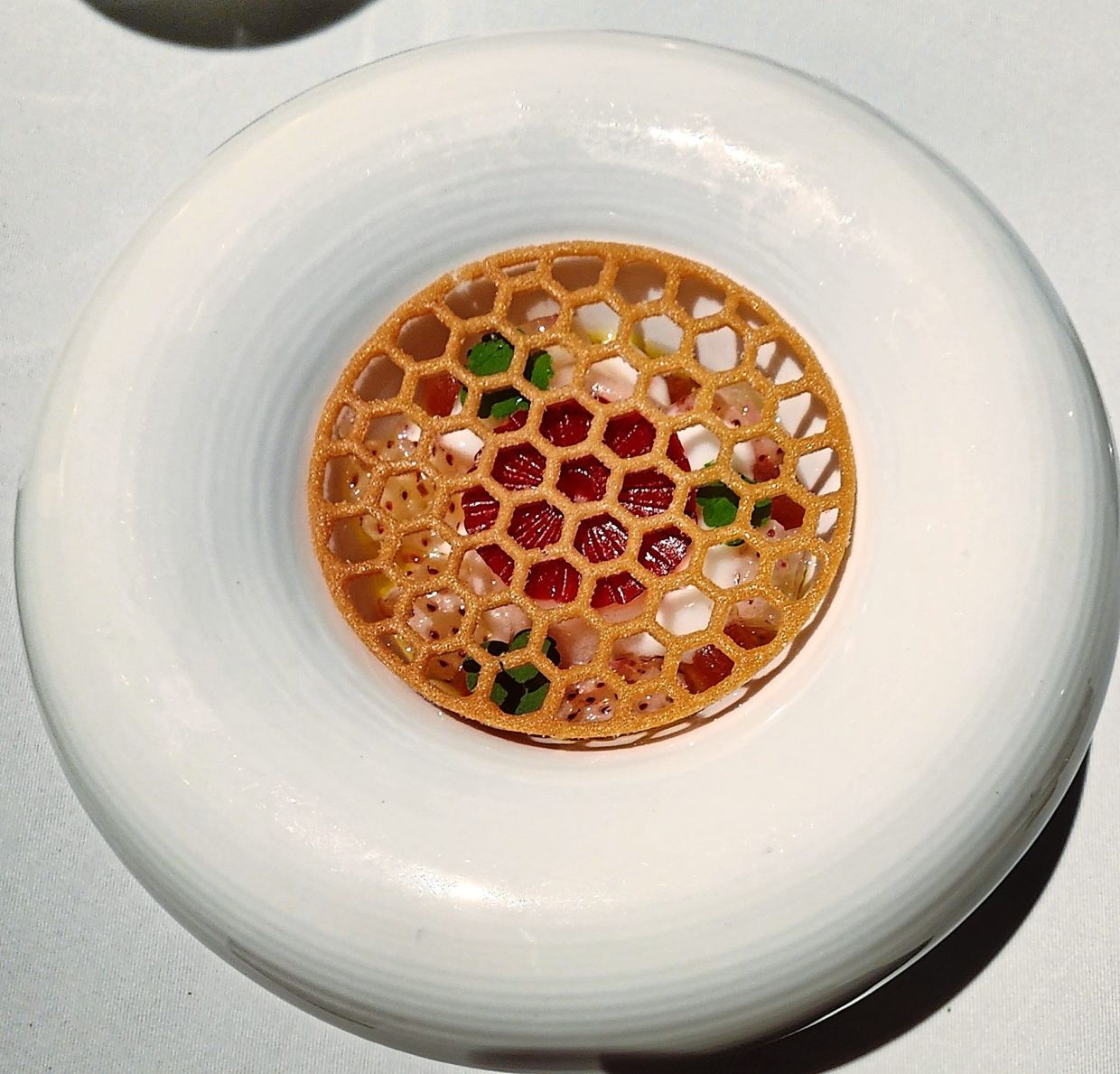Penang’s top chef puts vegetables at the heart of every single Malaysian-inspired meal that he crafts. — Photo: MICHAEL CHEANG/The Star
Standing at the Hin Bus Depot in George Town, Penang is Au Jardin. The eatery is cosmopolitan yet has a quaint, quirky charm. Foliage is omnipresent in the exterior and laced strategically through the interior of the eatery.
The dining area meanwhile is guided by soft, dim lighting and a focus on the open kitchen from whence the team works in easy companionship.
Central to everything that happens at the restaurant is chef-patron Su Kim Hock, a fun-loving, jocular man whose smile is so sincere, it reaches his eyes.
Su is a proud Penang boy whose parents and grandparents are also Penangites. After spending years honing his craft at numerous Michelin-starred restaurants in Britain and Taiwan, he eventually came back to his home state.
Su opened Au Jardin in Penang in 2018 and has gained accolade after accolade since, including a coveted Michelin star, which he has retained for four years running.
At its heart, Au Jardin is built around provenance – case in point, 85% of the ingredients are Malaysian, with 65% sourced directly from Penang.
“We have so many ingredients that we can work with locally and it would be just lazy not to use them. Plus, it defeats the purpose of having this restaurant,” says Su.
Interestingly, his meals are engineered in such a way that each course is built around vegetables. This is a unique perspective simply because in most fine-dining restaurants, proteins are often seen as the main stars while vegetables are typically viewed as ancillary characters that are merely there to add colour and vitality to a meal.
“The ethos of our cooking is always around vegetables.If there’s a vegetable and protein combination, it’s always vegetables first and then protein. Because I think vegetables are a lot more versatile. Whereas I think proteins can be ... quite boring.
“So for instance, if you served a steak and steamed or deep-fried it, people will start to judge you, because the general perception of a good piece of steak is that it has to seared, crusted or char-grilled. This makes it very boring I think. But with vegetables, people are more forgiving,” says Su.
The degustation menu at Au Jardin is priced at RM568++ and takes you on a journey through local seas and soil, exploring the bounty of what’s homegrown, transformed into brand new ideals under Su’s capable hands.
To begin, there are a trio of snacks – mushroom pastry with mushroom shavings, a sardine tart and a beef tartare tartlet. The mushroom tart is a wee little brittle thing with woody, rustic flavours that come through in a subtle way, rather than an in-your-face punch.
The sardine meanwhile is very good – a familiar nod to breakfast staples and home kitchens throughout Malaysia while the beef tartare is probably the best of the three – a smooth, slippery vixen that almost dissolves upon contact with your palate.
Up next, you’ll get a wonderful bread course of lacto-fermented bread, which is heavily influenced by the making of the Indian fermented staple of thosai. In Su’s iteration, the bread is fermented with dhal, rice and fenugreek, which is what gives it a singular tang.
On the side is a serving of tomato chutney butter and cultured butter. Honestly, this course is a true treat for the senses. The bread has a crisp, firm carapace that yields gently to a fluffy, tangy interior that pairs remarkably well with the tomato chutney.
The chutney has spice-riddled nuances and curry leaf embedded in its soul, while the cultured butter is a solid option for those looking for purer oleaginous qualities to meld with the bread.
Move on to the charms of the first course, which pays homage to the humble cabbage. Here, this cold all-cabbage show is propelled by charred cabbage, aged cabbage, fermented cabbage roll and cabbage brisket.
Su’s handling of the vegetable is delicate and calibrated – the charred treatment means there is a crisp edge to the surface that elicits smoky undertones and yet highlights the pure sweetness of the vegetable to fullest effect.
“Everyone has cabbage every day. But never would you know that you can actually have cabbage cold, right? So it’s kind of a challenge that, ‘Oh, you think you have eaten it all? Here you go’,” says Su.
The River Shrimp, as its name implies, features a fat, velvety river shrimp that has been finished off in a charcoal grill.
The prawn is a textural marvel – plump, fluffy, cushiony soft with plenty of spring and bounce – it gives you new appreciation for the dimensions that a skilled chef can take a single prawn to.
The zucchini flower served on the side is stuffed with pickled cauliflower and yet in some weird culinary wizardry the entire concoction somehow holds its shape satisfyingly well.
The next course is called Semporna’s Sea Harvest and features abalone, sea cucumber, squid ink focaccia and vin jaune (French yellow wine).
The Semporna abalone has been steamed for three hours with kelp and seaweed and this is juxtaposed against deep-fried sea cucumber.
At the bottom of the plate is the yellow wine sauce and the entire concoction is topped with a rosemary emulsion.
The fried sea cucumber is an unusual sleeper hit in this configuration and works in a tag team set-up with the abalone, which is springy and clingy.
Both these sea creatures are elevated by the wine sauce, which is thick and rich and has an almost collagen-esque like resonance.
Su’s main course is a Cognac & Hay Aged Duck with blackened banana ketchup, banana blossoms, Szechuan pepper and blanc jus.
The Penang aged duck is an absolute triumph – boasting skin that is beautifully burnished, crackles at the slightest prod and push and succumbs to meat that is ridiculously supple and succulent.
Honestly, Su should probably conduct a masterclass on this, because this is a dish he’s clearly nailed to a point of total perfection.
The meal ends with dessert in the form of Lacto Fermented Highland Pineberries with guava sorbet, Penang vanilla posset, kantan, butter crisps and sugar tuille.
It’s a light, refreshing offering that harnesses from the wealth of local fruits like pineberries and guavas and juxtaposes this against the crispness of the sugar tuille, which adds textural variation to the meal.
Ultimately, a meal at Au Jardin takes diners through a wondrous journey of exploration, traversing local terrain in bold, uncharted ways.
It’s Su’s love letter to Malaysia and to his home state of Penang – told through the language of food.




